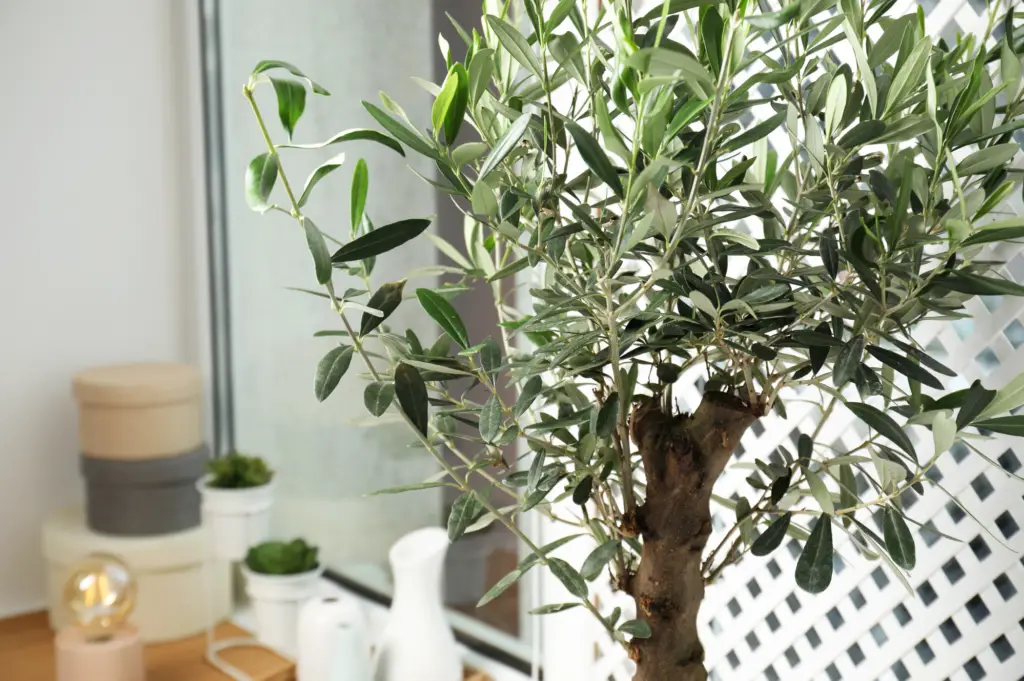Olive trees (Olea europaea) are revered for their beauty, longevity, and the delicious fruits they produce. Traditionally cultivated in Mediterranean regions, these trees have become increasingly popular among gardening enthusiasts worldwide. While growing olive trees outdoors is the norm, it is indeed possible to cultivate these iconic trees indoors, allowing individuals in non-Mediterranean climates to enjoy their presence and harvest their own olives. In this comprehensive guide, we will explore the necessary steps and considerations for successfully growing olive trees indoors.

Table of Contents
Selecting the Right Olive Tree Variety
When choosing an olive tree for indoor cultivation, it is crucial to select a variety that is suitable for container gardening. Some recommended indoor olive tree varieties include ‘Arbequina,’ ‘Picholine,’ and ‘Kalamata.’ These varieties tend to be smaller in size and more adaptable to the restricted root space provided by containers.
Choosing the Ideal Container
Olive trees thrive in well-draining soil, so it is vital to choose a container with sufficient drainage holes. Opt for a container that is at least 20 inches (50 centimetres) deep and wide, allowing enough space for the roots to grow and spread. Additionally, selecting a container with a light colour can help prevent overheating of the root system.
Preparing the Potting Mix
Creating a well-draining potting mix is essential for indoor olive tree cultivation. A blend of equal parts peat moss, perlite, and organic compost can provide the ideal growing medium. This mixture ensures adequate moisture retention while preventing waterlogged conditions that may lead to root rot.
Providing Optimal Lighting
Olive trees require abundant sunlight for optimal growth and fruit production. Place your indoor olive tree in a location that receives at least six to eight hours of direct sunlight per day. If natural light is limited, consider supplementing with grow lights, such as fluorescent or LED lights, positioned 12-18 inches above the tree.
Temperature and Humidity
Indoor olive trees prefer moderate temperatures, ideally between 60-80°F (15-27°C). Avoid exposing them to extreme temperature fluctuations or drafts. While olive trees can tolerate low humidity, they appreciate occasional misting or placing a tray filled with water near the plant to increase humidity levels.
Watering and Feeding
Maintaining proper watering practices is crucial for indoor olive tree health. Allow the top of the potting mix to dry out before watering thoroughly. Overwatering can lead to root rot, while underwatering may cause stress and fruit drop. Additionally, apply a balanced liquid fertiliser every three to four weeks during the growing season to provide the necessary nutrients.


Pruning and Shaping
Pruning helps maintain the desired shape and size of the olive tree while promoting better airflow and sunlight penetration. Prune in late winter or early spring, removing dead, damaged, or diseased branches. Additionally, remove any suckers emerging from the base of the tree to direct energy towards the main trunk.
Pollination and Fruit Set
To ensure fruit production, indoor olive trees require proper pollination. Olive trees are generally wind-pollinated, but indoors, where air movement is limited, hand pollination may be necessary. Gently shake the tree’s branches or use a soft brush to transfer pollen from one flower to another. Alternatively, introducing a small fan can help simulate wind for better pollination.
Dealing with Pests and Diseases
While indoor olive trees are relatively resistant to pests and diseases, occasional issues may arise. Common pests include aphids, spider mites, and scale insects. Regularly inspect the tree for any signs of infestation and treat with organic insecticides or neem oil if necessary. Additionally, ensure good air circulation and avoid overwatering to prevent fungal diseases.
Harvesting and Enjoying Olives
Indoor olive trees may take several years to produce fruit, but once they do, the experience of harvesting and enjoying your own olives is immensely rewarding. Harvesting usually occurs in late autumn or early winter when the olives turn from green to purple-black. Pick the ripe olives carefully by hand, and once harvested, they can be cured using various methods to remove their inherent bitterness.
Conclusion
Growing olive trees indoors provides an exciting opportunity for gardeners who reside in non-Mediterranean climates to enjoy the beauty and taste of these iconic trees. With the right variety selection, suitable containers, adequate lighting, and proper care, you can successfully cultivate olive trees indoors and witness their growth, beauty, and the eventual bounty of delicious olives they bear. Remember to be patient, as indoor olive tree cultivation may require time and effort, but the end result will undoubtedly be a source of pride and joy.

